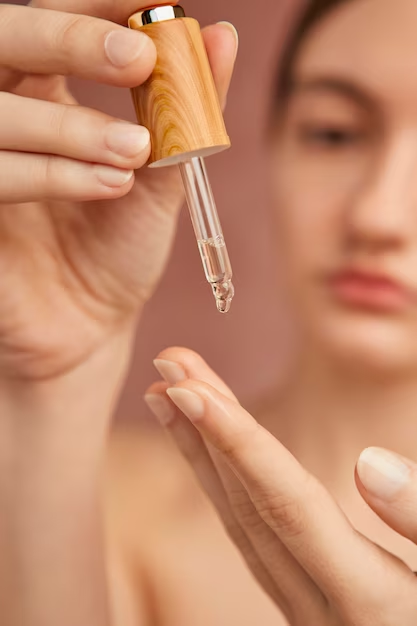How to Ensure Safety in Your Skin Products: A Professional Guide

INTRODUCTION
WELCOME TO RUNZOER INDIA, where we unlock the secrets to safeguarding your skin’s wellbeing! In today’s fast-paced world, it’s crucial to prioritize safety in every aspect of our lives, including our skincare routine. With an overwhelming number of products on the market, it can be challenging to discern the safe from the harmful. Fear not, as we present to you a comprehensive professional guide on how to ensure safety in your skin products. Whether you’re a beauty enthusiast, skincare newbie, or simply someone looking for reliable information, this blog post is tailored for everyone. Join us as we dive into the world of skincare safety, debunk myths, and equip you with the knowledge you need to make informed choices. Let’s embark on this journey to healthier, happier skin together!
Strategic Approach to Developing Safe Skincare Products
The skincare product market is inundated with an array of offerings from numerous brands. This abundance allows customers to make informed decisions based on their skin type and specific needs. When a skincare product fails to meet a customer’s expectations, they have the flexibility to switch to an alternative. While the initial attraction for a product may be influenced by its visibility or marketing, customers ultimately seek products that are suitable for their skin, easy to use, and free from short-term or long-term side effects.
As a skincare range manufacturer, your goal is to deliver safe products that provide tangible benefits to consumers, fostering loyalty. Achieving this entails ensuring that the products you offer are gentle on the skin and devoid of adverse effects. Safe products are created through meticulous selection of ingredients, resulting in safe skincare solutions.
Presented below is a comprehensive guide to meticulously selecting ingredients when formulating skincare products to ensure reliability. Review this guide attentively to sidestep any confusion and misinformation.
1. Selection of Antioxidants
Antioxidants play a crucial role in minimizing the production of free radicals that harm the skin. When employed consistently, they can diminish sun spots, visible signs of aging, and skin irritations. Antioxidants also contribute to prolonging product shelf life. Widely utilized antioxidants in skincare products include vitamin C, renowned for its skin-enhancing properties; vitamin A or retinol, which penetrates the skin deeply to bolster cell renewal and combat signs of aging; and vitamin E, recognized for its skin-nourishing and reparative qualities. Additionally, flavonoids found in tea serve as potent antioxidants, mitigating oxidative stress, reducing inflammation and rosacea, and impeding collagen degradation while delaying skin aging. Tailoring the selection of antioxidants in skincare formulations to best benefit your customers is essential.
2. Essential Oil Considerations
Essential oils are revered for their therapeutic benefits and should be chosen with great care. Impure, counterfeit, or oxidized essential oils can jeopardize overall health. For instance:
- Certain essential oils are contraindicated for health conditions such as headaches, migraines, pregnancy, or high blood pressure.
- Some essential oils are unsuitable for use on children, the elderly, or individuals with sensitive skin.
- Certain essential oils are incompatible with ongoing medical treatments or specific medication regimens.
Consulting informative research or aromatherapy literature facilitates the identification of essential oils that effectively address specific conditions without adverse reactions.
3. Optimal Essential Oil Composition
When formulating skincare products, the precise inclusion of essential oils holds paramount importance. Essential oils possess potent properties essential for enhancing beauty. Utilizing pure, unadulterated essential oils is imperative, analogous to breathing fresh air. Many recipe and formulation sources advocate excessive essential oil quantities, which can be unsuitable and trigger severe reactions. Given the concentrated nature of essential oils, they are generally used in lower dilutions of 0.25% to 2% in the overall product for sensitive to oily skin.
4. Ensuring Skincare Product Safety
Preservatives are crucial in skincare products to preempt microbial growth and product spoilage. Oil-based or butter-based products typically do not necessitate preservatives, as antioxidants suffice for ensuring product safety. Conversely, water-based products require the inclusion of preservatives. These preservatives serve to eradicate microorganisms and water-borne bacteria. An example of a natural preservative is Preservative ECO, a composite of components such as benzyl alcohol, salicylic acid, glycerin, and sorbic acid, derived from plants. Paraben-free, formaldehyde-free, and isothiazolone-free, this preservative system ensures product safety.
5. Utilizing Natural Emulsifiers for Product Cohesion
Blending oil and water-based components in skincare formulations necessitates natural emulsifiers. Castor oil serves as a natural emulsifying agent, harmonizing oil and water in skincare products. The essential fatty acids in castor oil aid in restoring the skin’s natural moisture balance, enriching the skin, stimulating collagen production, and imparting smoothness and suppleness. Furthermore, castor oil is a natural remedy for addressing wrinkles and fortifying the skin.
In addition to the aforementioned considerations, adhering to good manufacturing practices is imperative to ascertain that the products manufactured are safe for the skin. This entails using sanitized equipment, maintaining pristine manufacturing environments, utilizing labeled and genuine ingredients, accurately measuring ingredient quantities, employing hygienic water, and averting direct contact with external contaminants. Conducting various safety-assessment tests facilitates evaluating the efficacy of safe skincare products.
Modern consumers are discerning and conscientious in their skincare product selections, cognizant of the potential implications of product usage on their skin. Consequently, they scrutinize product information on labels and packaging to discern if the contents pose any hazards to the skin. Hence, prioritizing the raw materials employed in product formulation, as declared on the label, is pivotal to maintaining consumer trust and satisfaction.
